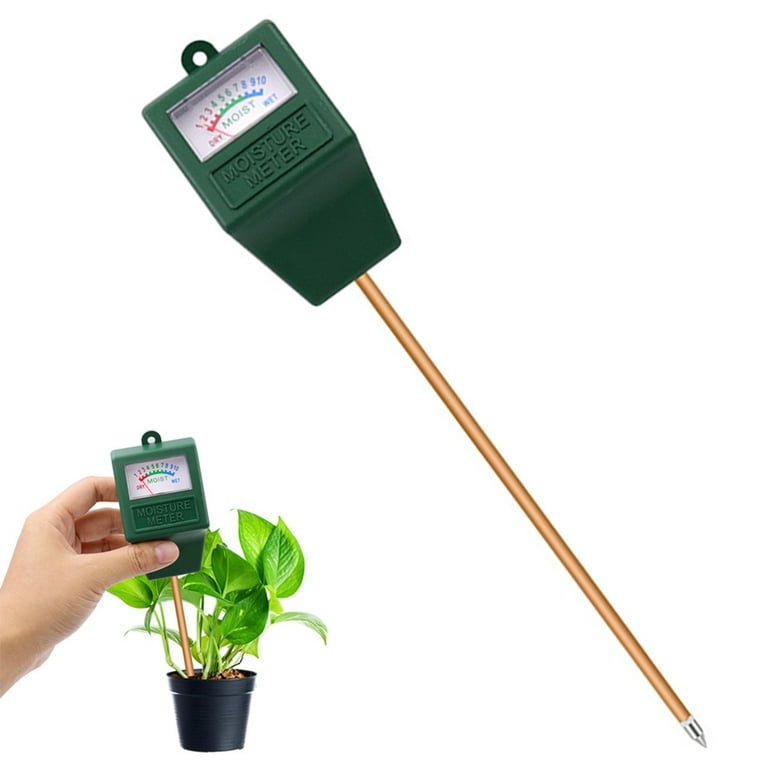Exactly How a Moisture Meter Can Assist You Preserve Ideal Conditions in Your Home or Office
Exactly How a Moisture Meter Can Assist You Preserve Ideal Conditions in Your Home or Office
Blog Article
Delve Into the Globe of Moisture Meters: Whatever You Need to Know
In the world of moisture meters exists a world of accuracy and usefulness that frequently goes undetected. These devices, while seemingly uncomplicated, hold a riches of information that can significantly influence numerous markets and applications. Understanding just how moisture meters operate, the different kinds available, and their varied uses can lose light on their importance in making certain high quality and efficiency. By discovering the complexities of dampness meters, one can discover a beneficial tool that goes beyond plain measurement, providing insights that can make a significant difference in many fields.
How Moisture Meters Work
Moisture meters run by measuring the electrical conductivity or capacitance of products to establish the moisture material existing. These meters are important devices across different sectors, consisting of building and construction, woodworking, and farming. By making use of various methods such as pin-type or pinless innovation, dampness meters provide accurate readings that assist experts make educated choices.
Pin-type dampness meters function by putting the sharp pins into the product being examined. The electric conductivity between the pins is after that measured, with higher wetness degrees resulting in increased conductivity. Moisture Meter. On the other hand, pinless wetness meters utilize electromagnetic signals to scan a larger location without creating any type of damages to the material's surface. These meters are optimal for swiftly examining wetness levels in big locations or completed products.
Regardless of the technique used, dampness meters play a crucial duty in preventing problems such as mold development, structural damages, or item problems triggered by excess dampness. Comprehending how these meters job is necessary for making sure the top quality and stability of materials in numerous applications.
Types of Moisture Meters
Given the important function dampness meters play in different industries, it is vital to recognize the different kinds offered to specialists for precisely assessing wetness degrees - Moisture Meter. There are mainly two major kinds of dampness meters: pin-type and pinless dampness meters

On the various other hand, pinless wetness meters use electro-magnetic sensor plates to check a larger location of the material without creating any damages. This type is ideal for rapidly scanning huge areas and is generally utilized for floor covering, walls, and ceilings. Pinless meters are hassle-free for taking readings on completed surface areas without leaving any type of noticeable marks.
Both kinds of dampness meters have their advantages and are useful source selected based upon the particular needs of the job available. Recognizing the differences in between these kinds is important for specialists to make accurate wetness assessments.
Applications Across Industries
Building and construction experts rely on wetness meters to evaluate the dampness levels in structure materials like drywall, timber, and concrete, which is vital for preserving architectural integrity and protecting against problems like rot or mold and mildew. The flooring sector utilizes wetness meters to measure the dampness web content in subfloors before setting up numerous floor treatments, preventing expensive problems due to excess moisture. In the food sector, moisture meters are utilized this contact form to check and blog control moisture levels in items such as grains, nuts, and dried fruits to preserve quality and quality.
Tips for Utilizing Wetness Meters
Utilize the moisture meter's calibration settings to ensure accurate readings when measuring the dampness web content in numerous products. In addition, make certain the meter is established to the right wetness variety for the material you are measuring to obtain the most precise results.
When making use of a pin-type dampness meter, put the pins to the proper deepness suggested for the material being tested. This ensures that the dampness analyses are extracted from the right depth within the material, giving an extra precise representation of its moisture web content. For pinless dampness meters, keep in mind to maintain correct call with the material's surface area to obtain trustworthy readings.
Consistently inspect and replace the batteries in your dampness meter to stop inaccurate readings because of reduced power. When not in usage to prolong its life-span and maintain its precision, Shop the meter in a risk-free and completely dry place. By complying with these pointers, you can make best use of the performance of your dampness meter and obtain accurate dampness content dimensions throughout different materials.
Upkeep and Calibration
To ensure the accuracy of dampness content measurements, routine upkeep and calibration of the moisture meter are vital action in its proper functioning. Upkeep entails keeping the moisture meter free and clean from debris that might influence its analyses. It is very important to comply with the maker's standards for cleaning to avoid damage to the gadget. In addition, normal calibration is necessary to verify the accuracy of the readings. Calibration adjusts the wetness meter to make sure that it supplies regular and reliable results.
Calibration needs to be executed occasionally, particularly if the wetness meter is utilized often or in essential applications where specific dimensions are needed. Numerous moisture meters feature calibration devices or can be calibrated by professional services. Moisture Meter. It is advised to maintain a log of calibration dates and results to track the efficiency of the dampness meter gradually. By preserving and calibrating the dampness meter consistently, individuals can trust the precision of the wetness content dimensions acquired.
Verdict

Finally, moisture meters play a vital duty in various markets by properly measuring the wetness material of products. Understanding exactly how these tools function, the different types offered, and correct upkeep and calibration are important for getting reliable results. Whether in construction, manufacturing, or agriculture, the use of moisture meters assists make sure quality assurance and performance in procedures.

In final thought, moisture meters play an important role in various sectors by properly determining the wetness content of products.
Report this page